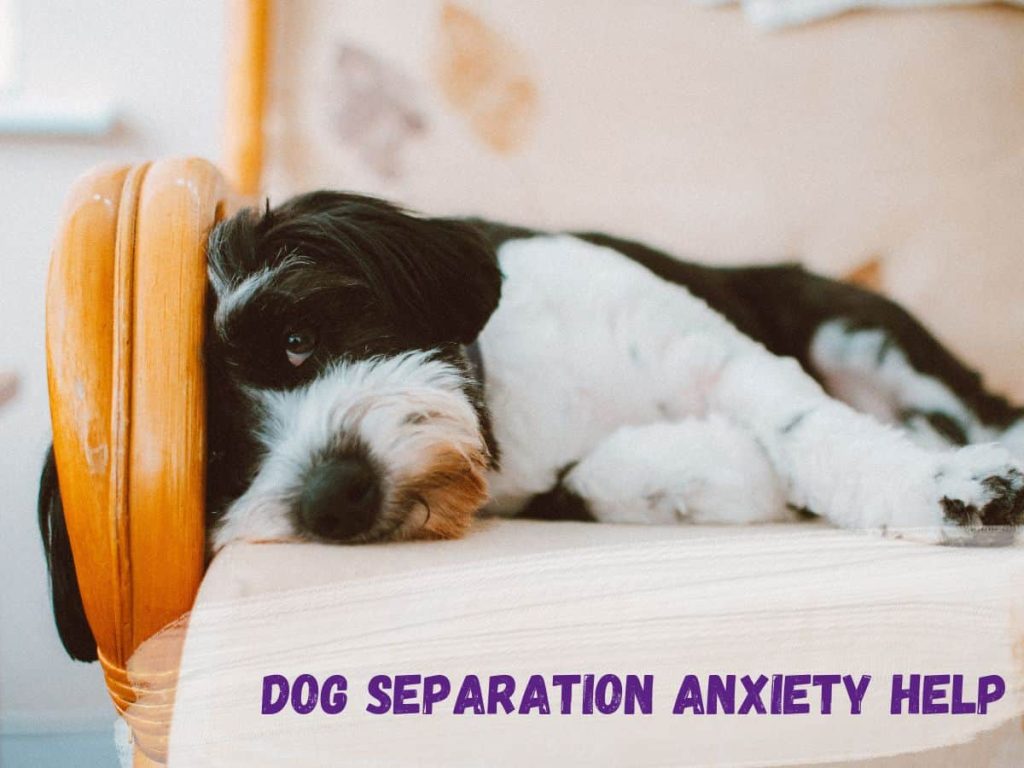How to Deal with Separation Anxiety in Pets

The Impact of Separation Anxiety on Pets
When pets are left alone, they might experience separation anxiety, a condition that can lead to distressing behaviors. Understanding this phenomenon is crucial for pet owners, as its implications extend beyond mere nuisance behaviors; they can affect the overall well-being of your furry friend. For many pets, being left alone can result in a mix of emotions, including fear and confusion. This emotional turmoil can manifest in various ways, such as excessive barking, scratching at doors, or even engaging in destructive actions when their owners are away. Therefore, it becomes essential to recognize the signs of this anxiety to help alleviate your pet’s discomfort.
Common Signs of Separation Anxiety
- Excessive barking or howling: This vocalization often serves as a cry for help, triggered by the pet’s distress at being separated from their owner.
- Destructive behavior: Chewing furniture or tearing up household items is not unusual. Pets may resort to this behavior as a coping mechanism for their anxiety.
- Urinating or defecating indoors: Even house-trained pets may regress when suffering from separation anxiety, leading them to eliminate inappropriately.
- Pacing or restlessness: Pets may exhibit nervous, repetitive motions, which can be indicative of their inability to relax.
- Escaping attempts: In their desperation to reunite with their owner, some pets may try to escape from their confines, which can lead to dangerous situations.
Causes of Separation Anxiety
- Changes in routine or environment: A sudden shift—like moving to a new home, a change in the owner’s schedule, or the arrival of a new family member—can trigger anxiety in sensitive pets.
- Adoption from a shelter or previous abandonment: Animals that have experienced past trauma, such as those adopted from shelters, may bring emotional baggage that manifests as anxiety when left alone.
- Loss of a family member or companion animal: Just like humans, pets can mourn the loss of their companions, leading to anxiety when they realize they are alone.
Dealing with separation anxiety can be a significant challenge for both pets and their owners. The emotional distress that pets experience often leads to frustration for owners who may not understand why their pet is behaving in such a manner. Understanding the underlying causes and identifying effective strategies is crucial for fostering a calm and secure environment. This involves not only recognizing the symptoms but also tailoring interventions to meet the specific needs of each pet.
Fortunately, there are various methods available to help ease your pet’s stress and assist them in feeling more confident during periods of solitude. Techniques may include gradual desensitization to alone time, providing mental stimulation through toys and puzzles, and establishing a consistent routine that your pet can rely on. In extreme cases, consulting with a veterinarian or a professional animal behaviorist may provide additional guidance for managing severe anxiety.
As we delve deeper into the complexities of pet behavior, it’s clear that recognizing and addressing separation anxiety is integral to maintaining a healthy, happy relationship with our beloved companions. Through education, understanding, and targeted strategies, we can create an environment that fosters security and reduces the stress of separation for our pets.
DIVE DEEPER: Click here to learn about essential pet nutrition

Understanding the Roots of Separation Anxiety
Understanding separation anxiety is imperative for pet owners hoping to alleviate the distress faced by their beloved companions. When pets feel abandoned or isolated, their instinctual response is to show behaviors indicative of emotional pain. This issue does not discriminate; it can affect pets of all breeds, ages, and temperaments. Research shows that dogs are particularly prone to separation anxiety, with studies indicating that as many as 20% of dogs may have this condition. However, cats are not entirely immune, as they can also experience similar distress during periods of solitude.
The underlying causes of separation anxiety can be multifaceted, varying greatly from one pet to another. While every animal is unique, there are several common factors that tend to contribute to the development of this condition:
- Lack of early socialization: Pets who haven’t been properly socialized during their formative stages may struggle with adapting to new situations, including being alone. Early exposure to different environments and experiences can build resilience.
- Overly attached behavior: Pets that have built a strong dependency on their owners may face heightened anxiety when left alone. This codependent relationship can lead to an emotional spiral when separation occurs.
- Change in household dynamics: Events such as moving homes, new family members, or changes in work schedules can disrupt a pet’s sense of security. Such shifts in their environment can feel threatening, resulting in anxiety.
Recognizing the scale of this issue is essential for any pet owner. Not only does separation anxiety cause distress for the animal, but it can also lead to complications for owners, who may struggle with feelings of guilt, frustration, or confusion. The health risks associated with prolonged anxiety in pets are notable, including diminished immune function, behavioral issues, or even physical ailments due to stress-related behaviors.
Equipped with knowledge about the signs and causes of separation anxiety, pet owners can proactively seek solutions tailored to the individual needs of their pets. The first step often involves creating a supportive environment that encourages self-sufficiency. For instance, incorporating strategies of gradual desensitization can help pets grow accustomed to being alone without experiencing overwhelming fear. This might involve leaving them alone for short periods and gradually extending the time as they become more comfortable.
Along with desensitization, engaging pets in mentally stimulating activities can create a positive outlet for their energy and focus, significantly mitigating anxiety. Utilizing interactive toys, puzzles, or engaging in play before leaving can help channel their mental and physical energy appropriately.
It’s important to recognize that addressing separation anxiety is not an overnight process. Patience and consistency play pivotal roles in assisting your pet in overcoming their fears. Each small step taken toward fostering independence is one that can significantly improve your pet’s quality of life, paving the way for a healthier, happier relationship.
| Category | Details |
|---|---|
| Behavioral Training | Structured training can help pets feel more secure when left alone, reducing anxiety over time. |
| Environmental Enrichment | Interactive toys, soothing music, and safe spaces provide comfort, keeping pets engaged and calm. |
Addressing separation anxiety in pets is essential for their well-being. Behavioral training forms the cornerstone of an effective strategy. By employing techniques like positive reinforcement, pet owners can help their furry companions learn to cope with solitude. This progressive approach allows pets to gain confidence and independence, ultimately leading to a more relaxed mindset when they are left alone.Additionally, environmental enrichment plays a critical role. Providing a variety of interactive toys can distract pets from their anxiety, turning solitary moments into enjoyable experiences. Incorporating soft, soothing music or ambient sounds can create a calming atmosphere within the home, further reducing feelings of loneliness.The combination of behavioral training and environmental strategies has shown promising results in helping pets manage their anxiety. In pursuing these solutions, pet owners can cultivate a nurturing environment, ensuring that their beloved animals feel secure and happy, even in their owner’s absence. By exploring these techniques, readers can implement effective solutions tailored to their pets’ needs, paving the way for healthier, stress-free lives.
LEARN MORE: Click here for tips on keeping your pets safe and comfortable
Strategies to Alleviate Separation Anxiety in Pets
Once pet owners understand the characteristics and triggers of separation anxiety, they can implement targeted strategies designed to enhance their pet’s well-being and independence. With a multifaceted approach, it becomes possible to address the emotional needs of pets while simultaneously easing the stress of separation.
Training Techniques are an effective way to combat separation anxiety. Positive reinforcement training can foster desirable behaviors and ease anxiety over time. Start by teaching your pet basic commands such as “sit,” “stay,” and “come.” Reinforcing these commands with rewards can help build a sense of security for your pet. Furthermore, introducing simple cues associated with your departure can help routine this process, such as picking up your keys or putting on shoes without leaving, signaling that you will return without invoking panic.
Another practical method is using Environmental Enrichment. Providing your pet with a stimulating environment can divert their attention from the anxiety of being alone. Creating a comfortable space with interactive toys, scratching posts for cats, or chew toys for dogs can promote engagement. Items that emit soothing sounds or even consider pheromone diffusers can create a more relaxing area. For example, the Adaptil diffuser for dogs or Feliway for cats can relax pets in their own territory.
Gradual Alone Time is vital. Gradually training your pet to spend time alone can build their confidence. Begin by leaving them in a separate room for just a few minutes, then gradually extend this time in intervals. For dogs specifically, practice short absences earlier in the day, so they learn that you will return. Cats tend to adjust to being alone quicker, so observations for signs of anxiety during these training sessions can help understand their comfort levels and adjust accordingly.
Using Calmative Products can support the training process significantly. Many pet owners find success with anxiety-reducing solutions, such as sprays, treats, or collars infused with calming herbs—like chamomile or valerian root—that can effectively soothe anxious pets. Engaging a veterinarian’s guidance in choosing the right products tailored to specific pets is advisable, particularly for severe cases of anxiety.
Another increasingly popular approach includes Interactive Cameras. These devices allow pet owners to check in on their pets while they are gone, offering peace of mind. Some even have treat dispensers, enabling owners to reward their pets for calm behaviors when they return home. This method not only helps in monitoring symptoms of anxiety but can also reinforce positive behavior by allowing for connection from a distance.
It’s also important to engage with a Professional Behaviorist if signs of separation anxiety persist. Behavioral specialists can conduct tailored assessments and develop robust plans suited to both owner and pet needs. They can also help identify any underlying issues or additional training methods that may have been overlooked.
Accommodating a pet’s emotional needs during separations goes beyond mere behaviors; it encompasses a commitment to nurturing their mental health. Implementing these strategies can offer a well-rounded approach to managing separation anxiety, fostering happier pets, and ensuring a harmonious relationship between pets and their owners.
DON’T MISS: Click here to learn more
Conclusion
In conclusion, dealing with separation anxiety in pets requires a thoughtful and compassionate approach. Pet owners must remain proactive in recognizing the signs of anxiety while implementing effective strategies tailored to their furry companions. By utilizing training techniques, providing adequate environmental enrichment, and gradually acclimating pets to alone time, the journey to a more confident and secure pet becomes achievable.
Moreover, exploring calmative products and utilizing modern technology such as interactive cameras can add significant value to your efforts. These solutions not only enhance a pet’s comfort but also enable pet parents to foster emotional connections even from afar. In cases where anxiety persists, consulting with a professional behaviorist can provide tailored strategies and insights that may be critical to alleviating distress.
Ultimately, tackling separation anxiety is about understanding and compassion. By addressing the emotional needs of pets, we can build a stronger bond, reduce fear, and cultivate happier, more relaxed animals. As pet owners, we play a crucial role in their well-being, and the journey toward embracing their independence is a fulfilling one that can enrich both our lives and theirs. For additional insights, consider researching further on party-specific behaviors or consulting with veterinarians for ongoing support in your pets’ mental health journey.



